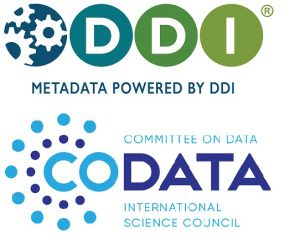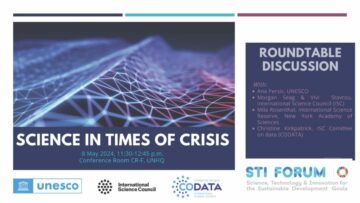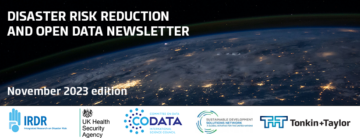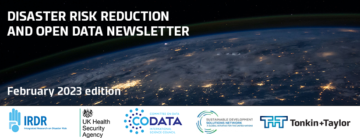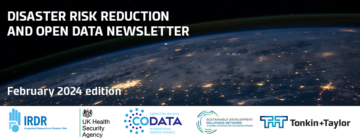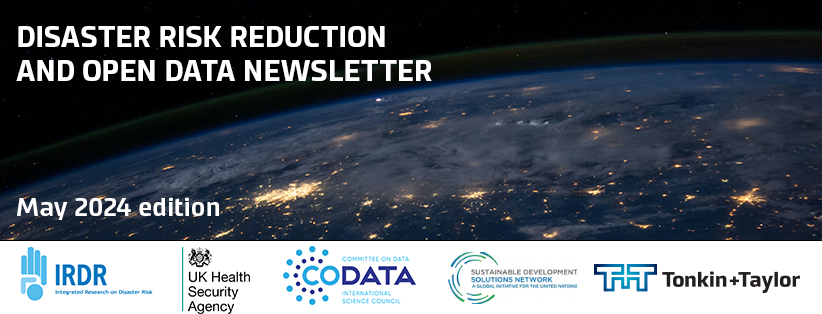
How Insurers Game Out Disaster Risk and Drop Customers
Rising losses from storms and hurricanes are prompting insurers to increase rates and curtail coverage. CSAA Insurance Group refused to renew its policy this year on the home that Ronnie de Supinski owns with her husband, Bronis, in Livermore, Calif. The reason given? Wildfire risk. The wildfire-risk score sent by CSAA? Zero.
How African cities can learn from each other about building climate resilience
More necessary than ever, communities must come closer together, share goals, knowledge, and ideas, and co-create innovative solutions to climate change. Here’s how some cities in Africa have responded to climate shocks and what others can learn from their experiences and better understand how to build a future of shared climate resilience and prosperity.
Hidden threat: Global underground infrastructure vulnerable to sea-level rise
As sea levels rise, coastal groundwater is lifted closer to the ground surface while also becoming saltier and more corrosive. A recent study by earth scientists at the University of Hawai‘i (UH) at Mānoa compiled research from experts worldwide showing that in cities where there are complex networks of buried and partially buried infrastructure, interaction with this shallower and saltier groundwater exacerbates corrosion and failure of critical systems such as sewer lines, roadways, and building foundations.
USGS deploys “aftershock kits” to study Whitehouse Station earthquakes
A U.S. Geological Survey team has begun a seismic sensor deployment to capture aftershock data following the 4.8 magnitude earthquake that rattled New Jersey April 5, 2024, and was felt for hundreds of miles. The team is deploying eight “aftershock kits” this week, which will gather information such as where aftershocks originate in the area, how long they last, and their magnitude, said Greg Tanner, a USGS electronics technician.
Côte d’Ivoire is currently preparing to launch its first national NAP document, which is expected to be validated by the minister in the coming month. Recognizing that the country will not achieve its climate ambitions without bringing all actors and citizens into the NAP process, the Côte d’Ivoire government has worked in parallel on their first NAP communication strategy, published in April 2024. The main objective of the strategy is to inform and raise awareness of the NAP’s priorities among all stakeholders.
Lessons on resilience from a year of global earthquakes
Rapid population growth in disaster-prone regions concentrates people where recovery after extreme events is costly. Thanks to Japan’s years of planning, preparations, and implementation of resilient building strategies, the country has become adept at mitigating the effects of significant earthquakes.
Study identifies increased threat to coastlines from concurrent heat waves and sea level rises
Concurrent occurrences of heat waves and extreme short-term sea level rises at the same coastal locations significantly increased between 1998 and 2017 when compared to the preceding 20 years, reports a study published in Communications Earth & Environment. The study also suggests that these events may be five times more likely to occur between 2025 and 2049 under a modeled high emissions scenario.
Read the full newsletter here
- SEO Powered Content & PR Distribution. Get Amplified Today.
- PlatoData.Network Vertical Generative Ai. Empower Yourself. Access Here.
- PlatoAiStream. Web3 Intelligence. Knowledge Amplified. Access Here.
- PlatoESG. Carbon, CleanTech, Energy, Environment, Solar, Waste Management. Access Here.
- PlatoHealth. Biotech and Clinical Trials Intelligence. Access Here.
- Source: https://codata.org/disaster-risk-reduction-and-open-data-newsletter-may-2024-edition/
- :has
- :is
- :not
- :where
- 1998
- 20
- 20 years
- 2017
- 2024
- 2025
- 2049
- 4
- 5
- 8
- a
- About
- Achieve
- actors
- adept
- africa
- African
- After
- aftershocks
- All
- also
- ambitions
- among
- and
- April
- April 2024
- ARE
- AREA
- AS
- At
- awareness
- BE
- become
- becoming
- begun
- Better
- between
- Bringing
- build
- Building
- by
- calif
- Campaign
- CAN
- capture
- change
- Cities
- Citizens
- Climate
- Climate change
- closer
- coastal
- CODATA
- come
- coming
- committee
- Communication
- Communications
- Communities
- compared
- compiled
- complex
- Concentrates
- concurrent
- corrosion
- costly
- country
- coverage
- critical
- Currently
- curtail
- data
- de
- deploying
- deployment
- deploys
- digital
- disaster
- document
- Drop
- each
- earth
- Earthquake
- edition
- effects
- eight
- Electronics
- Emissions
- engage
- Environment
- Ether (ETH)
- events
- EVER
- expected
- Experiences
- experts
- extreme
- Failure
- felt
- First
- five
- following
- For
- Foundations
- from
- full
- future
- game
- gather
- given
- Global
- Goals
- Government
- greg
- Ground
- Group
- Growth
- Have
- her
- High
- Home
- How
- How To
- HTTPS
- Hundreds
- ideas
- identifies
- implementation
- in
- Increase
- increased
- inform
- information
- Infrastructure
- innovative
- insurance
- insurers
- interaction
- into
- ITS
- Japan’s
- Jersey
- knowledge
- Last
- launch
- launches
- LEARN
- Level
- levels
- Lifted
- likely
- lines
- locations
- Long
- losses
- magnitude
- Main
- May 2024
- May..
- minister
- mitigating
- Month
- more
- must
- National
- necessary
- networks
- New
- New Jersey
- Newsletter
- objective
- occur
- of
- on
- open
- open data
- Other
- Others
- out
- owns
- Parallel
- People
- planning
- plato
- Plato Data Intelligence
- PlatoData
- policy
- population
- preparing
- priorities
- process
- prosperity
- published
- raise
- Rates
- reason
- recent
- recognizing
- recovery
- reduction
- regions
- Reports
- research
- resilience
- resilient
- responded
- Rise
- Rises
- Risk
- s
- Said
- same
- scenario
- Science
- Science and Technology
- scientists
- score
- SEA
- Sea level
- seismic
- sent
- Share
- shared
- short-term
- showing
- significant
- significantly
- Solutions
- some
- stakeholders
- station
- storms
- strategies
- Strategy
- Study
- such
- Suggests
- Surface
- Survey
- Systems
- team
- Technology
- than
- thanks
- that
- The
- The Area
- their
- There.
- These
- they
- this
- this week
- this year
- threat
- times
- to
- together
- true
- u.s.
- under
- underground
- understand
- university
- validated
- Vulnerable
- was
- waves
- week
- What
- when
- which
- while
- will
- with
- without
- worked
- worldwide
- year
- years
- youth
- zephyrnet
- zero


